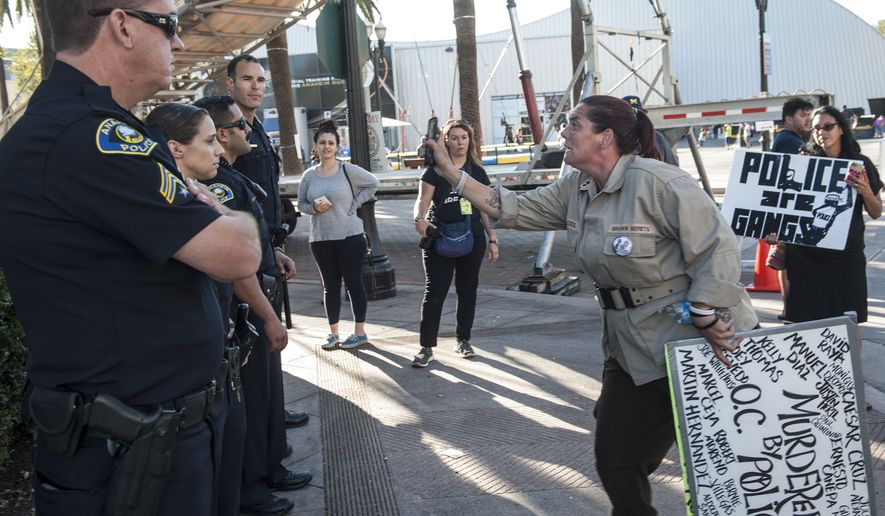A study by a Harvard professor released this month found no evidence of racial bias in police shootings even though officers were more likely to interact physically with non-whites than whites.
The paper for the National Bureau of Economic Research, which examined thousands of incidents at 10 large police departments in California, Florida and Texas, concluded that police were no more likely to shoot non-whites than whites after factoring in extenuating circumstances.
“On the most extreme use of force — officer-involved shootings — we find no racial differences in either the raw data or when contextual factors are taken into account,” said Harvard economics professor Roland G. Fryer Jr. in the abstract of the July 2016 paper.
Mr. Fryer, who is black, told The New York Times that the finding of no racial discrimination in police shootings was “the most surprising result of my career.”
At the same time, the study found blacks and Hispanics were more than 50 percent more likely to experience physical interactions with police, including touching, pushing, handcuffing, drawing a weapon, and using a baton or pepper spray.
The 63-page study, “An Empirical Analysis of Racial Differences in Police Use of Force,” appears to support research conducted at Washington State University showing that officers in simulation tests were actually less likely to shoot at blacks than whites.
SEE ALSO: Police kill more whites than blacks, but minority deaths generate more outrage: analysis
The paper also challenges the contention by the new wave of civil-rights groups such as Black Lives Matter that racist police are singling out blacks for shootings.
The findings are nothing if not timely, coming after protests spurred by two deadly incidents earlier this month involving black men shot and killed by police in Louisiana and Minnesota.
Their deaths, which are under review, spurred a sniper attack on police Thursday in Dallas during a Black Lives Matter march that left five officers dead and seven injured.
The 25-year-old gunman, Micah Xavier Johnson, told negotiators he wanted to take out white people, especially officers. He was killed after Dallas police detonated a remote-control robot in his vicinity after he refused for hours to exit a college building.
Mr. Fryer’s study found that police are 50 percent more likely to engage in physical interactions with blacks and Hispanics, including touching, pushing and drawing weapons.
“Adding controls that account for important context and civilian behavior reduces, but cannot fully explain, these disparities,” the paper said.
The study examined data collected in six Texas cities, three Florida counties and Los Angeles County, as well as New York City’s Stop, Question and Frisk program.
Mr. Fryer said that the “importance of our results for racial inequality is unclear.”
“It is plausible that racial differences in lower level uses of force are simply a distraction and movements such as Black Lives Matter should seek solutions within their own communities rather than changing the behaviors of police and other external forces,” he said in the study’s conclusion.
“Much more troubling, due to their frequency and potential impact on minority belief formation, is the possibility that racial differences in police use of nonlethal force have spillovers on myriad dimensions of racial inequality,” Mr. Fryer said.
• Valerie Richardson can be reached at vrichardson@washingtontimes.com.




Please read our comment policy before commenting.